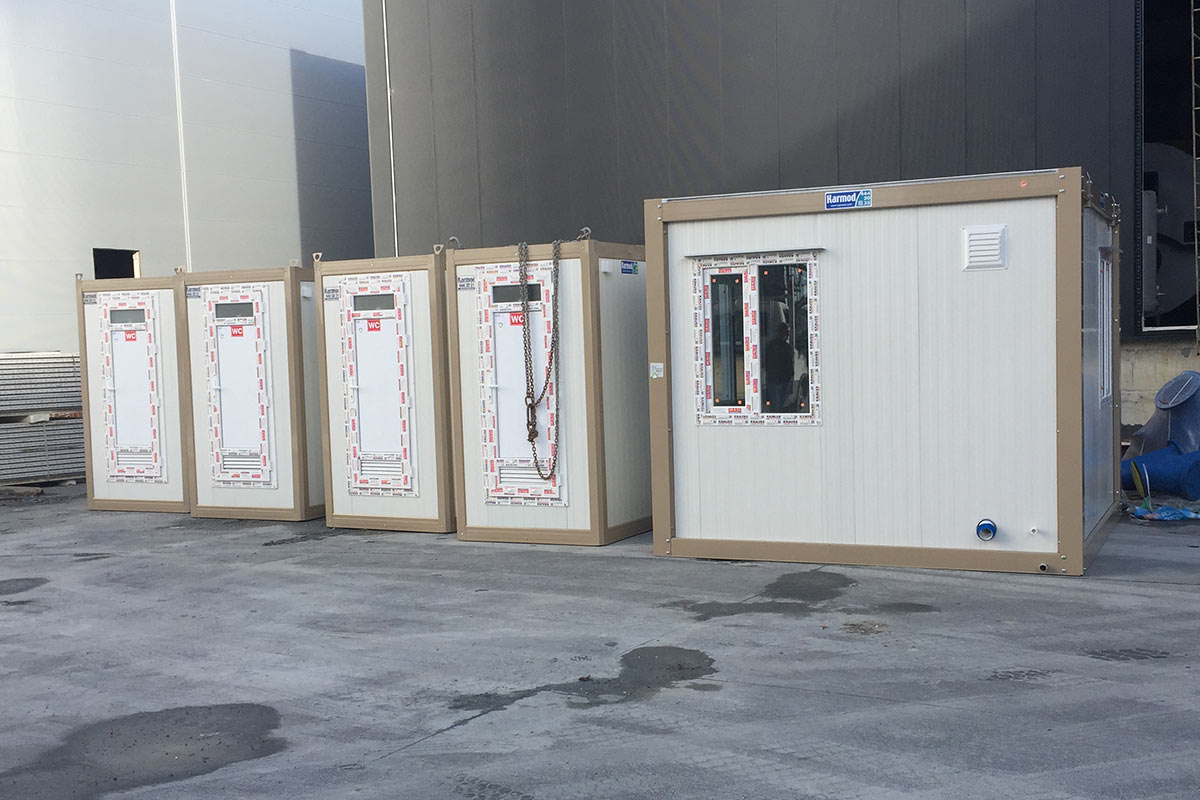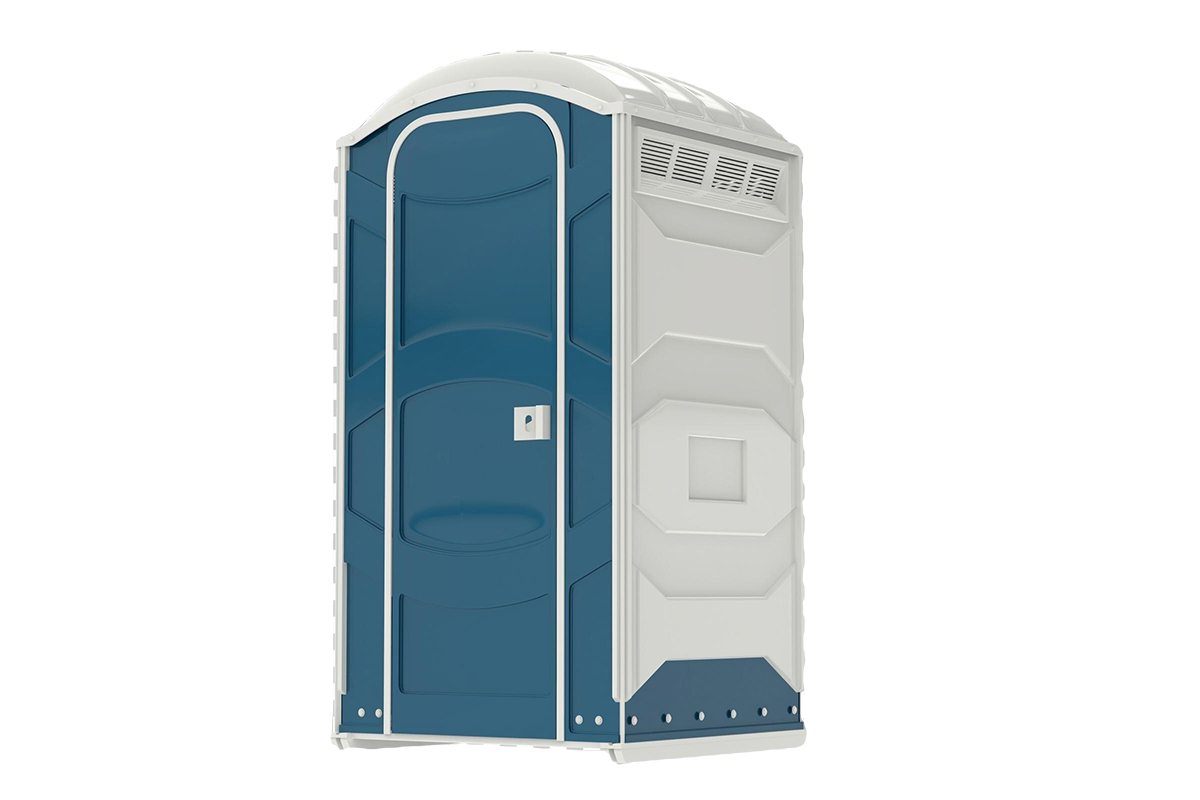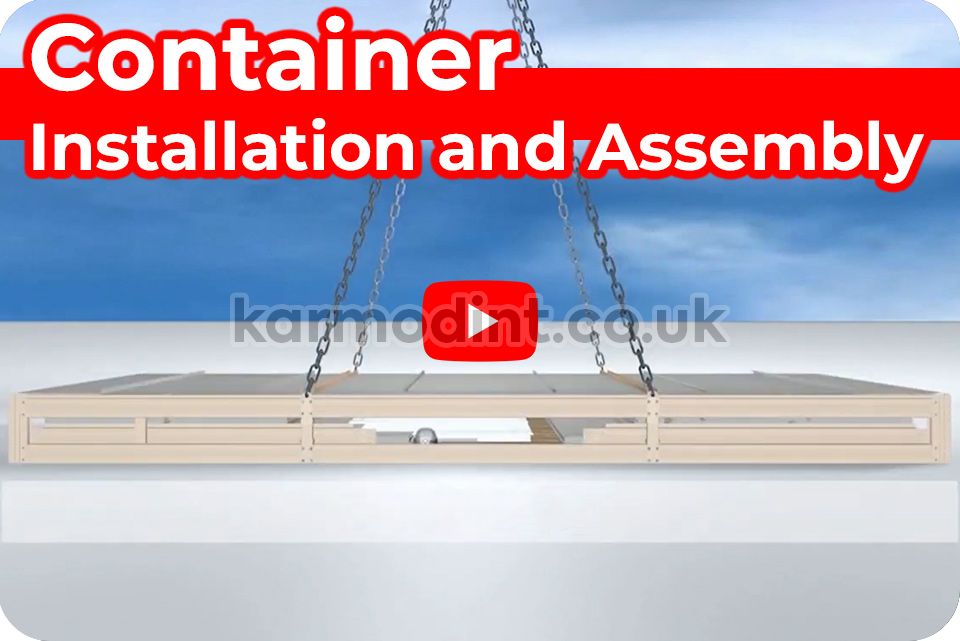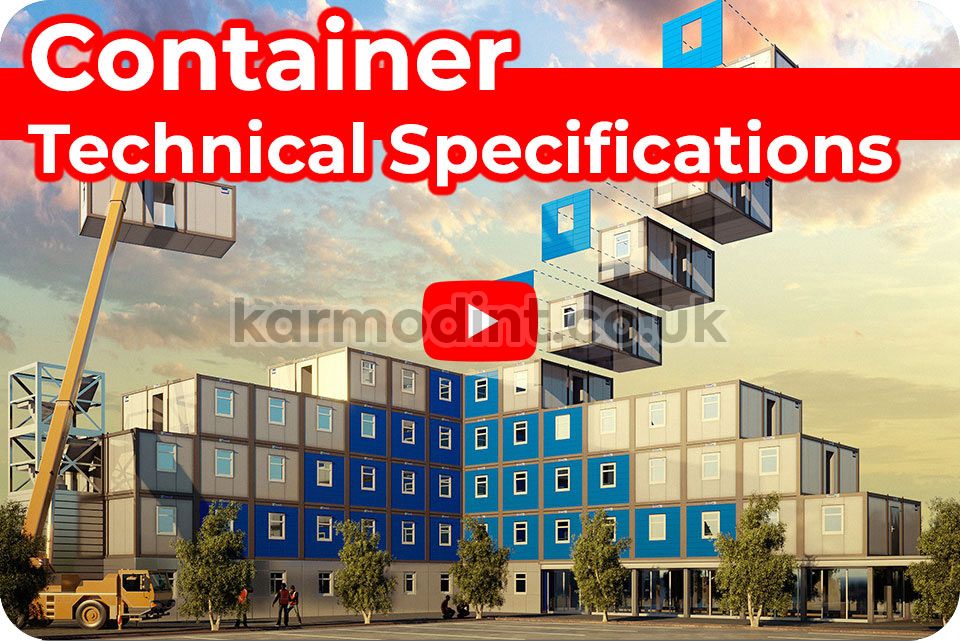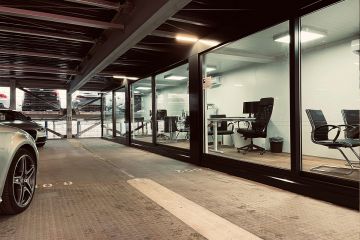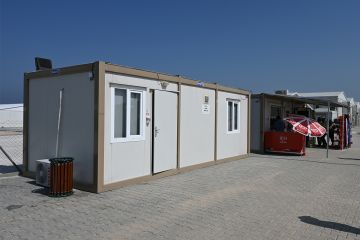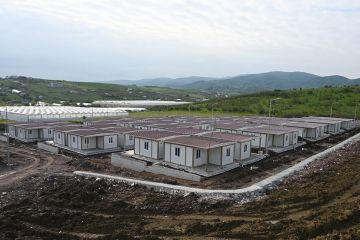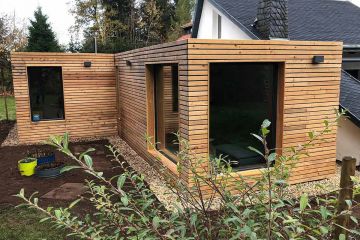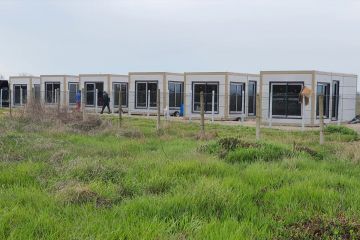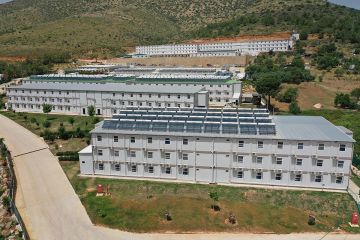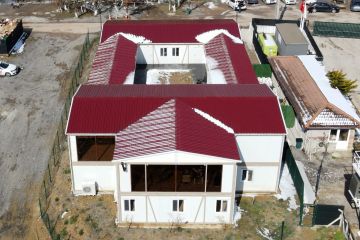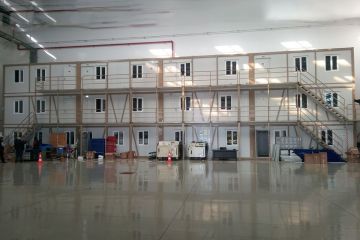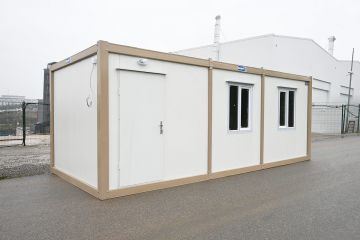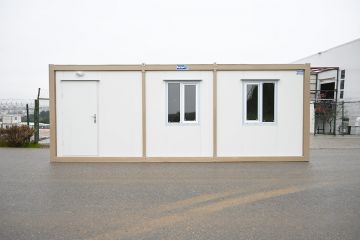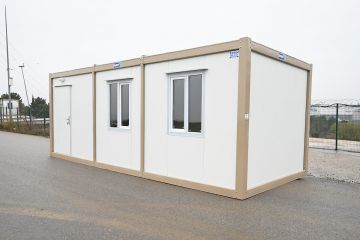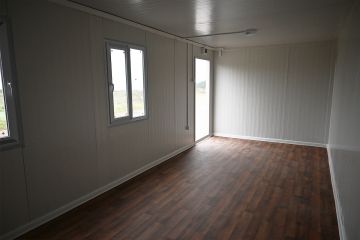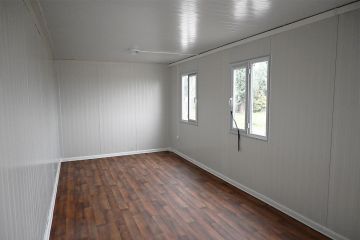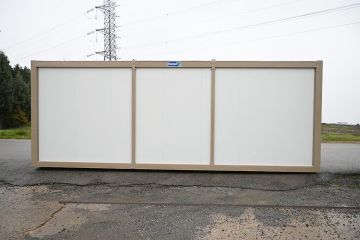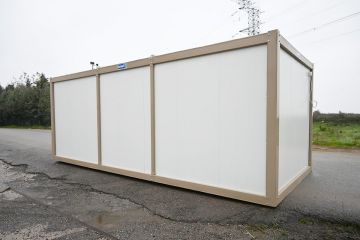When it comes to container definition, the traditional perception might restrict it to being a mere storage or transport unit. But with the emergence of innovative construction solutions such as prefabricated containers and prefab containers, this definition has evolved substantially. These unique container structures offer a practical, efficient, and eco-friendly alternative to conventional building practices. With their modular design, they promise limitless opportunities for customization, breaking new ground in architectural design and residential living. The simplicity of a container has been transformed into an extraordinary platform for modern, sustainable living.
Container Models
The world of container models offers a fascinating array of possibilities. Whether you're looking for container structures like portable cabins, toll booths, or gatehouses, or exploring the market of containers for sale, there's a solution tailored to your needs. Prefabricated containers, or prefab containers, stand out as an innovative choice. Their modular design makes them highly versatile, adaptable for various purposes from a trendy cafe to a cozy home. What sets these container modular structures apart is their interior. A peek inside a container reveals a surprisingly spacious and customizable space, ready to be tailored to your unique vision. As you explore these container models, you'll find that they redefine what a simple steel box can be.
Container Stores
Container stores offer a diverse range of units tailored to accommodate different needs. From prefab container structures to customized designs, the selection can meet a myriad of requirements. An understanding of container dimensions is critical to making an informed choice, whether you're looking for a compact space for storage or a larger unit for a unique living space. The diversity doesn't end at size; container prices also vary, influenced by factors such as the container's condition, its features, and the level of customization required. Whether you're a first-time buyer or a seasoned investor, container stores provide an exciting platform to explore the potential of this versatile construction medium.
Container Homes
Container homes have gained popularity as innovative and sustainable housing solutions. These homes are created using repurposed shipping containers, offering an affordable and eco-friendly alternative to traditional construction methods.
The concept of container homes involves transforming shipping containers into comfortable and functional living spaces. These containers can be purchased as prefabricated units or customized according to individual preferences and requirements.
Container structures provide a sturdy foundation for container homes, ensuring structural integrity and durability. These structures are designed to support multiple containers and accommodate various architectural designs.
Container Offices
As businesses strive for flexibility and uniqueness in their workspace, the emergence of container offices marks a revolution in design philosophy. These container structures, characterized by their versatility and portability, offer a sustainable and innovative solution for creating functional and engaging workplaces. With the ability to create container modular structures, businesses can expand, rearrange, or reduce their workspace as needed, adding an unprecedented level of adaptability. But it's not just about the exterior; the container interior plays a vital role too. It can be customized to promote productivity, collaboration, and well-being, ensuring that these unconventional offices are as comfortable and practical as their traditional counterparts. These container offices are not just a trend; they're a testament to the creative potential of modern architecture.
Modular Container Buildings
Modular container buildings are revolutionizing the way we approach construction. These structures, often prefabricated or known as prefab containers, are setting new standards in flexibility, efficiency, and sustainability. Here's how:
- Versatility: Container structures can be adapted for a myriad of uses. From residential homes to pop-up shops, and from classrooms to office spaces, their potential applications are virtually limitless.
- Efficiency: As the prefab container can be built off-site, it significantly reduces construction time. These units can be transported and installed at the chosen location quickly and conveniently.
- Sustainability: Container modular structures are an excellent example of 'upcycling', turning something initially made for one purpose (cargo transport) into a completely different usage (building). This approach can dramatically reduce the environmental footprint of new construction.
- Customizability: Despite their standard exterior dimensions, these structures offer considerable flexibility in interior design, allowing for personalized spaces that reflect the users' needs and aesthetic preferences.
In a rapidly evolving world, modular container buildings offer an innovative, cost-effective, and eco-friendly solution to our construction needs.
Toilet Containers
The versatile nature of container design has led to some unique and practical applications, among which toilet containers stand out. These are essential solutions for outdoor events, construction sites, or remote locations, where conventional sanitation facilities may be unavailable. The design of toilet containers prioritizes practicality and cleanliness, often incorporating durable materials and easy-to-clean surfaces. Modular in nature, these containers can be transported easily, providing a temporary or long-term solution depending on the requirement. With an increasing emphasis on health and hygiene standards in public spaces, toilet containers are an innovative and necessary addition to our evolving sanitation infrastructure.
Flat Pack Containers
Flat pack containers signify a revolution in portable and modular solutions. These units are uniquely designed to be easily transported, assembled, and disassembled, offering unparalleled convenience compared to traditional containers. The distinctive feature of these containers is that they can be 'flat-packed', reducing their volume significantly for transport. This allows for multiple units to be shipped together, resulting in substantial savings in transport costs.
Upon arrival, these flat pack containers can be quickly and efficiently assembled on site, requiring only simple tools and a small team. This ease of assembly does not compromise their strength or durability. Made with robust materials, they are built to withstand varying weather conditions and heavy usage.
Flat pack containers can serve numerous purposes such as storage units, office spaces, workshops, or even temporary housing, providing an adaptable, cost-effective, and eco-friendly solution for a multitude of needs. As we progress towards a more sustainable and efficient future, the prominence and use of flat pack containers are set to rise.
Custom Containers
In the dynamic world of containers, customization is a game-changer. Custom containers provide a unique solution, tailored to specific needs and aesthetics. Here's why these units are increasingly sought-after:
- Design Freedom: Custom containers allow users to alter container dimensions and interiors to suit their specific needs. Whether it's a home, a shop, an office, or even a mobile library, the options for customizing the container's inside space are almost endless.
- Structural Flexibility: Whether it's a single unit or a container modular structure, custom containers can be adapted to a variety of structural configurations. This could range from stacking multiple containers for a multi-storey building to joining them side by side for a larger space.
- Prefab Convenience: Many custom containers come as prefabricated or prefab containers, meaning they are designed and partly built off-site. This ensures high-quality construction and allows for faster setup once the container is delivered.
- A Wide Market: With the increasing popularity of these unique structures, you'll find a plethora of custom containers for sale. This diverse market means that there's a solution for almost every need and budget.
Custom containers are far more than a trend; they represent a sustainable, versatile, and personal approach to construction and design. As we reimagine our living and working spaces, these creative solutions offer endless possibilities.
Container Accommodations
Container accommodations are an innovative response to the need for flexible, affordable, and sustainable housing. They are becoming increasingly popular across the globe, with a variety of prefab containers for sale designed specifically for living purposes.
Constructed from sturdy shipping containers, these structures can be used to create single units or container modular structures. Prefabricated container homes or hotels are designed and built off-site, ensuring efficient construction and quality assurance. Once completed, they are transported to their final location and installed. The process is significantly faster than traditional construction methods, making them an excellent choice for temporary housing or emergency accommodations.
One of the most appealing aspects of container accommodations is their interior. The container inside can be fully customized to fit various needs, whether it's a compact, minimalistic design for affordable housing, or a luxurious, fully-equipped interior for a high-end hotel suite.
Container accommodations are more than just a trendy alternative to traditional housing. They represent a sustainable, cost-effective, and versatile solution that is changing our concept of what a home can be. As we continue to explore new ways to meet our housing needs, the future of container accommodations seems promising.
Container Dining Halls And Cafeterias
Container structures have reshaped the way we think about architecture, finding a niche in the realm of dining halls and cafeterias. These units are often created using prefab containers, which are designed and assembled off-site, then transported to their intended location for quick and efficient installation.
The convenience of prefabricated container-based dining halls lies in their ability to create a fully functional eating space in a fraction of the time it takes to construct a traditional building. Whether it's for a university campus, an office complex, or a public park, these units offer a practical, cost-effective solution for feeding large groups of people.
One of the most appealing aspects of container dining halls and cafeterias is their modular structure. This allows for a high degree of customization and scalability. Single container units can be used to create small cafes or food stalls, while multiple units can be combined to form larger dining halls. The modular design also means that these structures can be expanded or reconfigured with relative ease to adapt to changing needs.
Moreover, container dining halls and cafeterias provide an opportunity to create unique, modern dining experiences. From open-air cafeterias with a view to cozy, indoor dining spaces, the potential designs are endless.
As we continue to seek out sustainable, flexible, and cost-effective building solutions, the use of containers for dining halls and cafeterias is likely to become increasingly common, offering a unique dining experience while meeting our practical needs.
Container Size
Understanding container dimensions is a crucial step when considering the purchase or rental of a prefab container. The size of the container you choose will directly impact the container interior, its price, and the possibilities for its use in various container structures.
There are standard sizes in the container industry that largely correspond to the dimensions of shipping containers. The most common lengths are 20 and 40 feet, though containers can come in a variety of other sizes depending on the specific needs of the user.
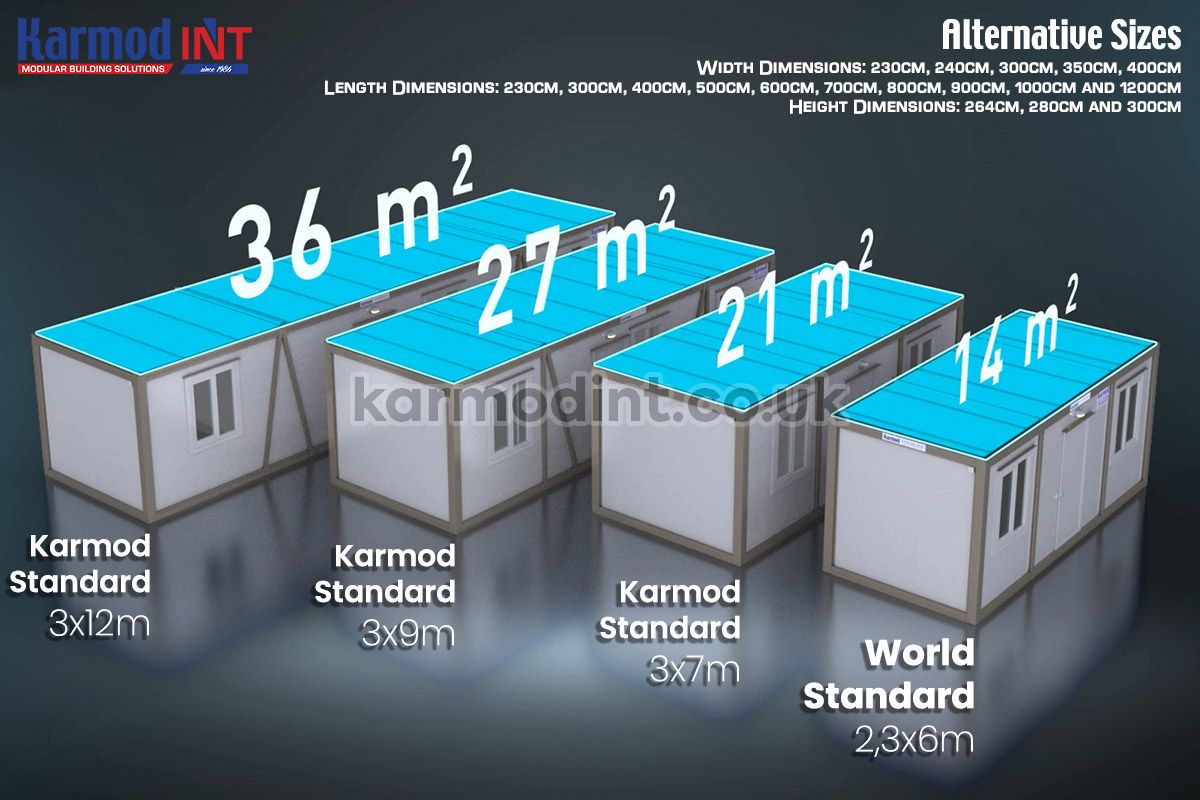
The standard width of a container is around 8 feet, while the height typically ranges between 8.5 to 9.5 feet for high-cube containers. However, these dimensions can be altered for custom projects, leading to containers that are wider or taller to fit specific requirements.
The container price varies depending on its size, condition, and the cost of any modifications or customizations. Generally, larger containers and those with extensive modifications will be more expensive.
Considering container dimensions and the corresponding interior space is crucial for determining its suitability for various purposes. Whether it's for storage, a pop-up shop, a mobile office, or a modular home, understanding the size of the container is vital for planning the layout and usage of the interior space.
Understanding the various container sizes and how they influence price and usage is key to making an informed decision. The right container size can help ensure the success of your project, whether it's a small storage solution or a large modular construction.
Container Companies
Container companies play a pivotal role in various industries, especially in construction, logistics, and architecture. These organizations cater to a range of needs, from providing standard shipping containers for transport and storage, to offering prefabricated containers for modular construction projects.
Companies specializing in prefab containers have shown remarkable innovation, transforming the simple concept of a shipping container into a versatile structure that can be used for a myriad of applications. These include, but are not limited to, container homes, offices, stores, and even restaurants.
These companies typically offer a selection of standard sizes based on shipping container dimensions, and also provide custom solutions to meet specific client needs. The customization options include features such as additional doors, windows, insulation, and custom interiors, allowing clients to create a space that matches their exact requirements.
Many of these organizations also offer services beyond simply supplying containers. They can assist with designing the layout of a modular project, transporting the containers, and even provide on-site installation services.
Some container companies also prioritize sustainability, using recycled shipping containers as the basis for their products. This approach reduces waste and makes use of existing resources, reflecting the growing interest in sustainable construction methods.
Whether you're looking for a unique modular building solution, or require a series of shipping containers for logistics purposes, container companies offer a diverse range of products and services to meet these needs. Exploring the offerings of different container companies can help you find the perfect solution for your specific project or business.
Container Images
Container Cost
Containers have been redefining the landscape of the construction, shipping, and storage industries for years now. They offer a flexible, cost-effective, and sustainable solution for a multitude of applications. But, how much does a container cost? The answer to this query significantly depends on the type of container you're considering and the specific requirements you may have.
Traditional shipping containers that are typically used for transportation and storage are available in a wide array of sizes. The cost of these units is dictated by factors such as size, condition, and the current market situation. You can find both new and used containers for sale, and the choice between these options will also significantly impact the final price.
On the other hand, prefabricated containers designed for use in construction projects, such as container homes, offices, and shops, come with a different pricing model. Here, container prices are influenced by the complexity of the design, the level of customization required, and the cost of additional features like insulation, windows, doors, and interior finishing.
When it comes to prefabricated container structures, it's essential to consider not just the initial purchase cost, but also the ongoing maintenance expenses. While these structures are known for their durability and low maintenance needs, there are still regular upkeep tasks to be factored into the overall cost.
Finally, remember that container costs can vary widely based on the supplier. It's always a good idea to compare prices from different vendors and look for competitive rates while ensuring the quality of the product and service.
Containers, whether for sale or rent, offer a versatile solution for various needs. Understanding the cost dynamics can help you make an informed decision and find the best value for your investment.
Container Projects and Solutions
The world of containers is not limited to shipping and storage anymore; they have been revolutionizing many sectors with innovative and flexible solutions. In recent years, containers have been increasingly used in a variety of projects, enabling industries to reimagine, redefine, and repurpose spaces in unique ways.
One of the most significant areas where containers have made a noticeable impact is in construction. With the surge in popularity of minimalist and eco-friendly living, containers have found their way into the heart of architectural design. Their modular structure allows for easy construction and deconstruction, making them ideal for temporary and permanent projects alike. From creating affordable housing solutions to building trendy cafes and luxurious resorts, the applications are limitless.
Apart from residential and commercial use, portable cabins have also been reimagined for community-centric projects. They have been transformed into portable libraries, schools, and clinics, bringing essential services closer to communities in need. In disaster-stricken regions, containers can be swiftly deployed as emergency shelters, medical stations, or command centers, demonstrating their potential in crisis management.
Moreover, containers have found uses in the entertainment industry, being transformed into stages for music festivals or pop-up galleries for art exhibitions. Their mobility and versatility make them an attractive solution for such short-term yet impactful projects.
Lastly, the tech industry is harnessing the power of containers, albeit in a different way. In software development, "containers" are a standardized unit of software that packages up code and all its dependencies so the application runs quickly and reliably from one computing environment to another.
The world of container projects and solutions is vast and ever-expanding. As more industries begin to realize the potential of these versatile units, we can expect to see even more innovative uses for containers in the future.
Container Solutions to Anywhere in the UK
- Aberdeen
- Birmingham
- St Davids
- St Asaph
- Wells
- Armagh
- Ripon
- Truro
- Bangor
- Ely
- Chichester
- Newry
- Lichfield
- Stirling
- Salisbury
- Perth
- Liverpool
- Hereford
- Inverness
- Bath
- Chester
- Lincoln
- Durham
- Worcester
- Carlisle
- Derry
- Winchester
- Exeter
- Lisburn
- Gloucester
- Cambridge
- Norwich
- Lancaster
- Preston
- St Albans
- Newport
- Canterbury
- Oxford
- Dundee
- Chelmsford
- Peterborough
- York
- Portsmouth
- Westminster
- Salford
- Southampton
- Swansea
- Derby
- Stoke-on-Trent
- Wolverhampton
- Plymouth
- Brighton
- Kingston
- Sunderland
- Newcastle
- Nottingham
- Coventry
- Wakefield
- Leicester
- Belfast
- Cardiff
- Bristol
- Edinburgh
- Bradford
- Sheffield
- Glasgow
- Leeds
- London
- Manchester
Shipping Container Disadvantages
While shipping containers offer a host of benefits including versatility, affordability, and eco-friendliness, they also come with a set of challenges that need to be carefully considered. This post will focus on some of the disadvantages associated with shipping containers and how they can be managed effectively.
One of the primary challenges of using shipping containers is that they are built for transportation, not for housing. This means that certain modifications are necessary to make them livable, such as adding insulation, ventilation, and adequate windows for natural light. However, these changes can be complex and costly, potentially offsetting the affordability of the container itself.
Additionally, shipping containers are typically made from steel, which conducts heat and cold extremely well. This can result in uncomfortable living conditions in extreme climates without proper insulation. Furthermore, steel is prone to rust and corrosion, which can reduce the lifespan of the container if it is not well-maintained.
Another issue is that while containers may seem like an eco-friendly choice, their conversion into habitable spaces can have a considerable environmental impact. The process often involves extensive alterations, which can generate substantial waste and consume large amounts of energy.
Furthermore, obtaining planning permission for container homes can be a complex process. Some regions have strict building codes and regulations that may not accommodate container homes. Therefore, it's essential to understand local building codes before embarking on a container home project.
Space is another challenge. Standard shipping containers offer limited space, which might not be suitable for larger families or those who desire spacious living areas. However, creative design solutions can help maximize the use of space and make it feel more expansive.
Lastly, not all containers are suitable for housing purposes. Some may have been used to transport hazardous materials and may retain harmful residues. Therefore, it's crucial to ensure that any container used for housing is safe and meets all relevant health standards.
In summary, while shipping containers can serve as an innovative solution for housing and other applications, understanding their disadvantages is key to successfully navigating potential challenges. With careful planning, informed decision-making, and innovative design, many of these challenges can be overcome.


